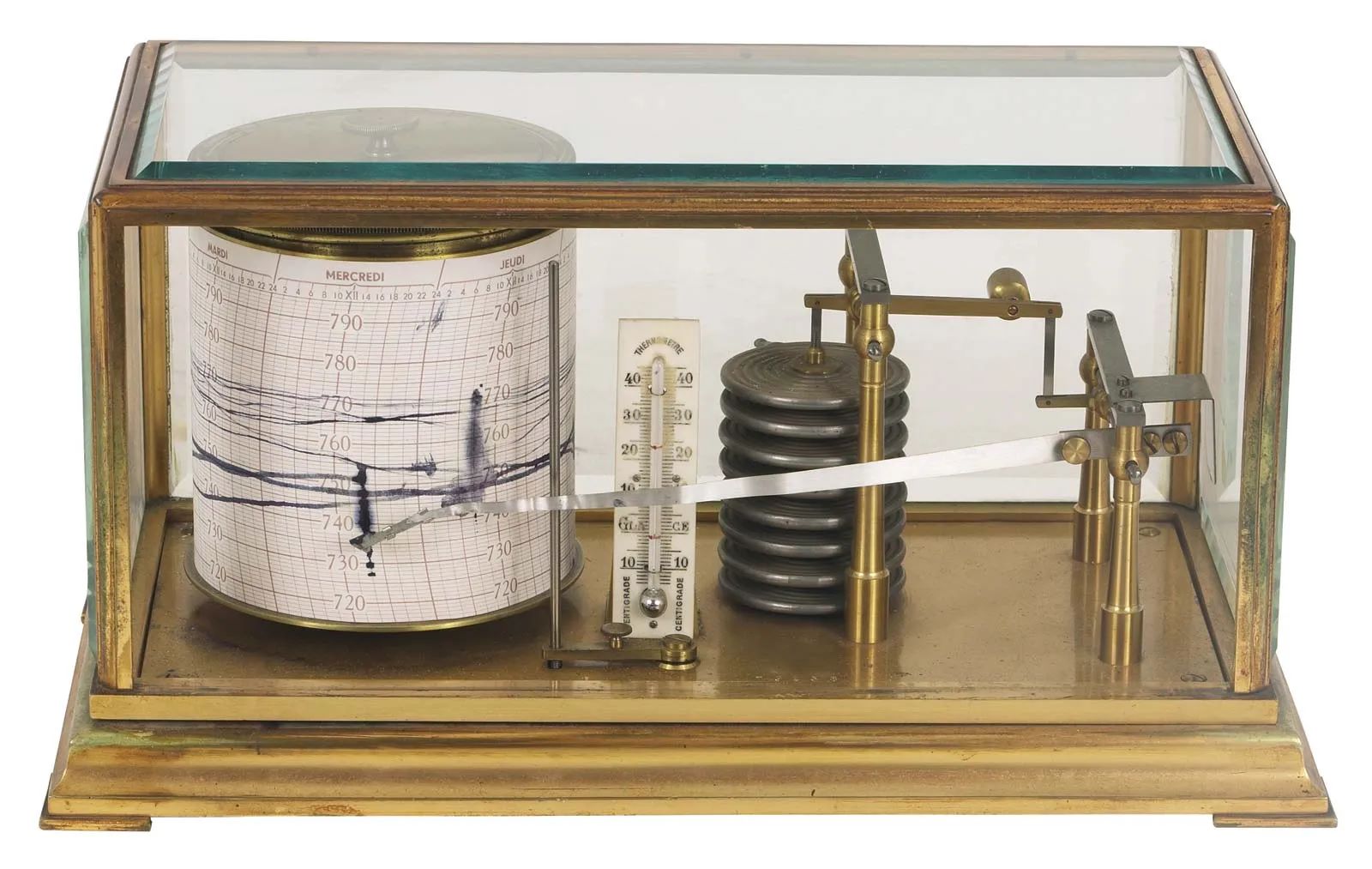
Ever wondered how meteorologists predict the weather? One essential tool they use is the barometer. This nifty instrument measures atmospheric pressure, helping to forecast weather changes. Barometers come in various types, including mercury, aneroid, and digital versions. Each type has its unique way of measuring pressure but all serve the same purpose: to give us a heads-up on weather conditions. From predicting storms to understanding altitude, barometers play a crucial role. Whether you're a weather enthusiast or just curious, these 30 great barometer facts will blow your mind and deepen your appreciation for this amazing device.
What is a Barometer?
A barometer measures atmospheric pressure. It's crucial for weather forecasting and understanding climate patterns. Let's dive into some fascinating facts about this essential instrument.
-
Invented by Evangelista Torricelli: In 1643, Italian scientist Evangelista Torricelli created the first barometer using mercury. This invention revolutionized meteorology.
-
Mercury Barometers: Traditional barometers use mercury. The height of the mercury column changes with atmospheric pressure, providing readings.
-
Aneroid Barometers: These barometers don't use liquid. Instead, they have a sealed, flexible metal chamber that expands or contracts with pressure changes.
-
Barograph: A barograph records pressure changes over time. It uses an aneroid barometer connected to a pen that traces a line on a rotating drum.
-
Weather Prediction: Barometers help predict weather. Falling pressure often indicates stormy weather, while rising pressure suggests fair conditions.
-
Altitude Measurement: Barometers can measure altitude. As altitude increases, atmospheric pressure decreases, allowing barometers to estimate height above sea level.
-
Portable Barometers: Modern barometers are portable. Hikers and pilots use them to monitor weather and altitude changes.
-
Digital Barometers: These use electronic sensors to measure pressure. They're often found in smartphones and smartwatches.
-
Barometric Pressure and Health: Changes in barometric pressure can affect health. Some people experience headaches or joint pain when pressure drops.
-
Barometers in Aviation: Pilots rely on barometers for altitude readings. Accurate pressure measurements are crucial for safe flight operations.
Historical Significance of Barometers
Barometers have played a vital role in history, influencing scientific discoveries and everyday life.
-
Galileo's Influence: Galileo Galilei's work on air pressure laid the groundwork for Torricelli's barometer invention.
-
Weather Stations: Early weather stations used barometers to collect data, leading to more accurate weather forecasts.
-
Maritime Navigation: Sailors used barometers to predict storms, helping them navigate safely.
-
Scientific Research: Barometers have been essential in studying atmospheric phenomena and understanding Earth's climate.
-
Barometer Myths: In the past, people believed barometers could predict earthquakes. While not true, this shows the instrument's perceived importance.
-
Barometers in Art: Barometers often appear in paintings and literature, symbolizing change and unpredictability.
-
Barometers in Homes: In the 18th and 19th centuries, barometers were common household items, used to predict weather for daily activities.
-
Barometers and Agriculture: Farmers relied on barometers to plan planting and harvesting, ensuring better crop yields.
-
Barometers in Education: Schools use barometers to teach students about atmospheric pressure and weather patterns.
-
Barometers in Museums: Historical barometers are displayed in museums, showcasing their evolution and significance.
Modern Uses of Barometers
Today, barometers are more advanced and integrated into various technologies.
-
Smartphones: Many smartphones have built-in barometers to improve GPS accuracy and provide weather updates.
-
Smartwatches: Fitness enthusiasts use smartwatches with barometers to track altitude changes during activities like hiking and skiing.
-
Weather Apps: Weather apps use barometric data to provide real-time forecasts and alerts.
-
Environmental Monitoring: Barometers help monitor environmental conditions, aiding in climate research and pollution control.
-
Drones: Drones equipped with barometers can measure altitude and atmospheric pressure, improving flight stability.
-
Sports Equipment: Some sports equipment, like altimeters for skydiving, use barometers to measure altitude accurately.
-
Automotive Industry: Barometers in cars can help optimize engine performance by adjusting for altitude changes.
-
Home Weather Stations: Modern home weather stations include digital barometers, providing accurate weather data for enthusiasts.
-
Scientific Instruments: Advanced barometers are used in scientific research, from studying weather patterns to exploring other planets.
-
Emergency Services: Barometers assist emergency services in predicting severe weather, enabling better preparedness and response.
Barometers: More Than Just Weather Tools
Barometers do more than predict the weather. They’ve been crucial in aviation, marine navigation, and even scientific research. These instruments help pilots maintain safe altitudes and sailors navigate stormy seas. In science, barometers aid in studying atmospheric pressure changes, which can impact everything from climate patterns to human health.
Understanding how barometers work can make you appreciate their role in daily life. Whether you’re a weather enthusiast or just curious, knowing these facts can be pretty enlightening. So next time you see a barometer, remember it’s not just a weather gadget; it’s a tool with a rich history and many uses.
Keep exploring the world around you. Who knows what other fascinating facts you’ll uncover?
Was this page helpful?
Our commitment to delivering trustworthy and engaging content is at the heart of what we do. Each fact on our site is contributed by real users like you, bringing a wealth of diverse insights and information. To ensure the highest standards of accuracy and reliability, our dedicated editors meticulously review each submission. This process guarantees that the facts we share are not only fascinating but also credible. Trust in our commitment to quality and authenticity as you explore and learn with us.


